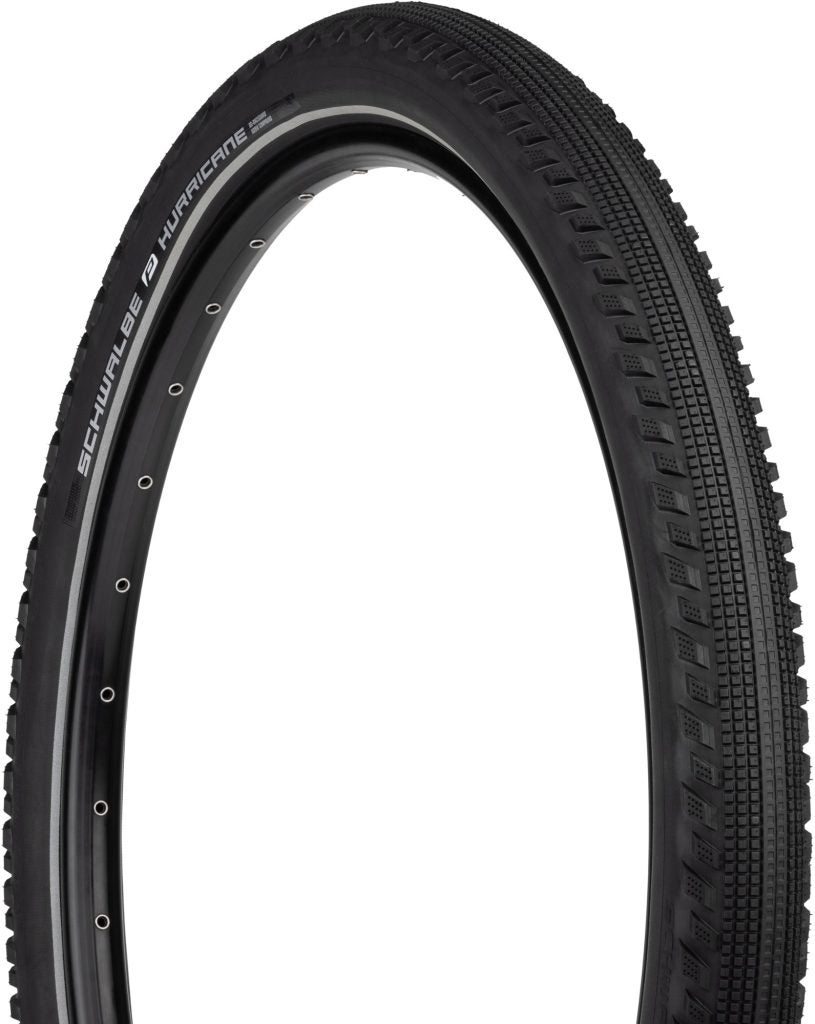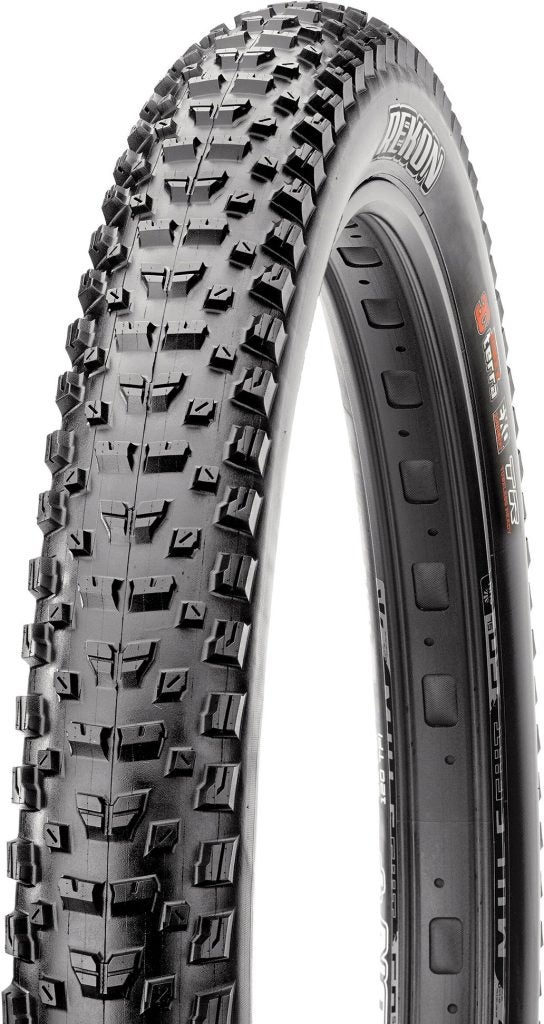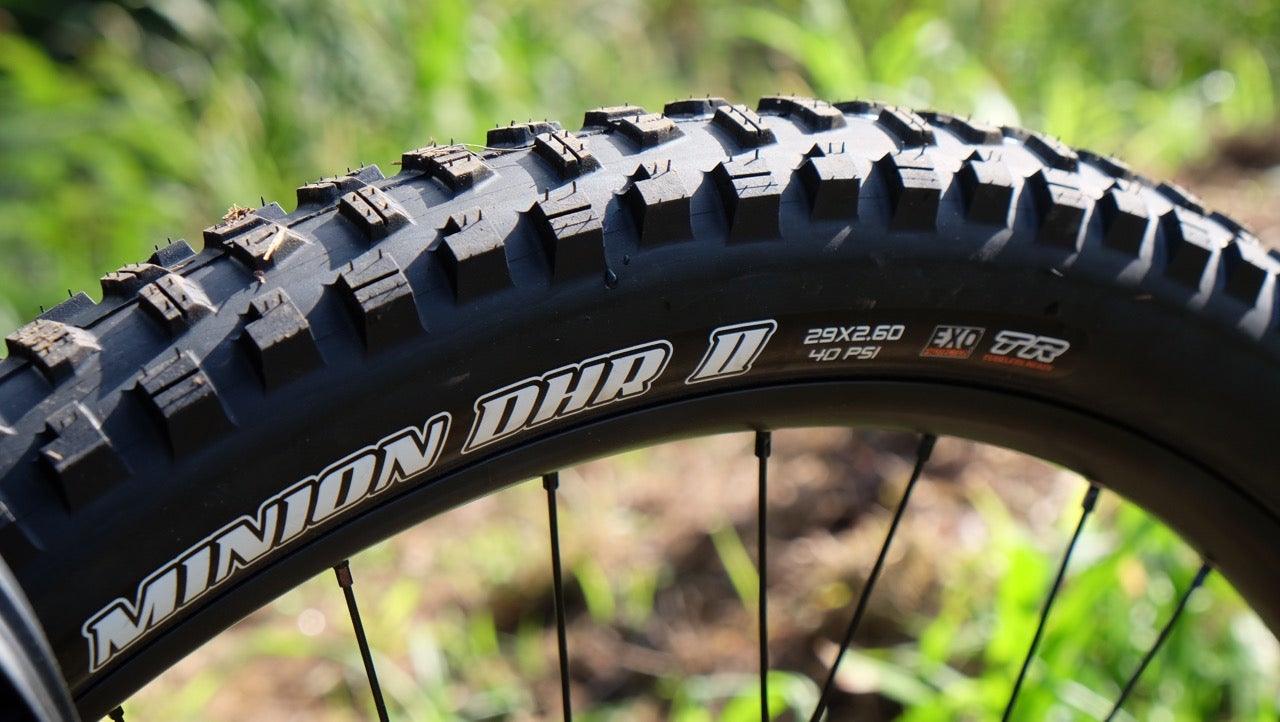
Our Editors independently research, test, and rate what we feel are the best products. We use affiliate links and may receive a small commission on purchases.
Mountain bike tires are the key connection between you and the trail. The right mountain bike tires can enhance your ability to corner with confidence and climb steep, technical terrain. But how do we know when it’s time to bid farewell to our trusty companions and replace them with fresh treads? In this feature, we break down the basics so you can know when to say goodbye to worn-out tires.
When Should You Replace Your Mountain Bike Tires?
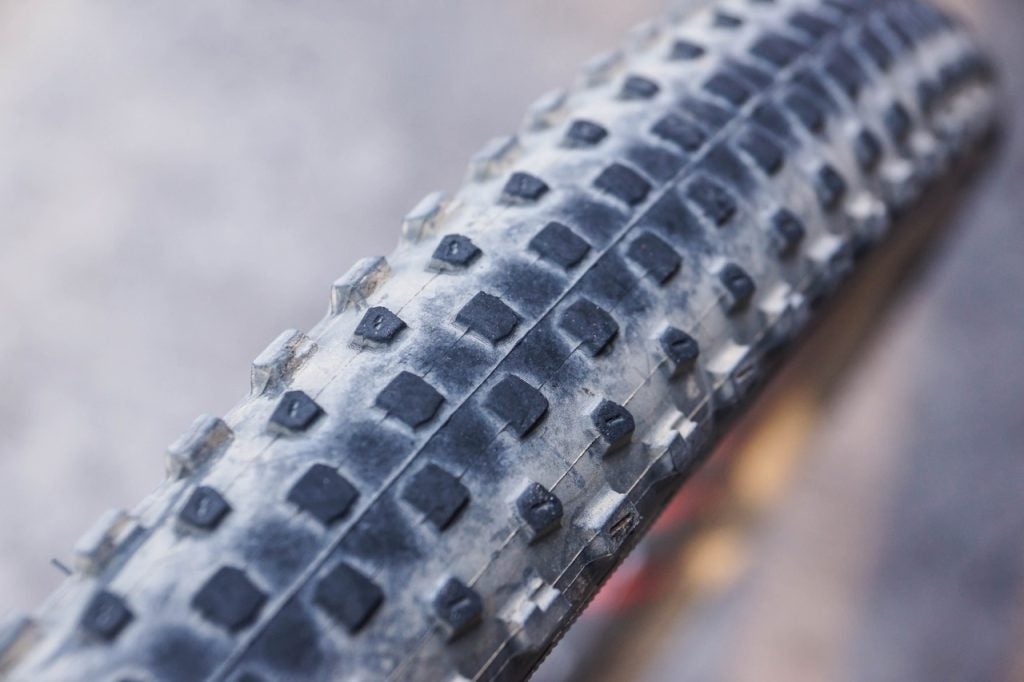
Several factors come into play when deciding whether it’s time to replace your mountain bike tires. One of the most evident signs is tread wear. The tread pattern on your tires plays a vital role in maintaining grip and traction. As the miles add up, the rubber gradually wears down, resulting in decreased performance. Notable signs of wear include flattened or smoothed tread knobs down the center of the tire and torn or undercut edge knobs from cornering. When these signs become prominent, it’s an unmistakable indication that your tires are due for replacement.
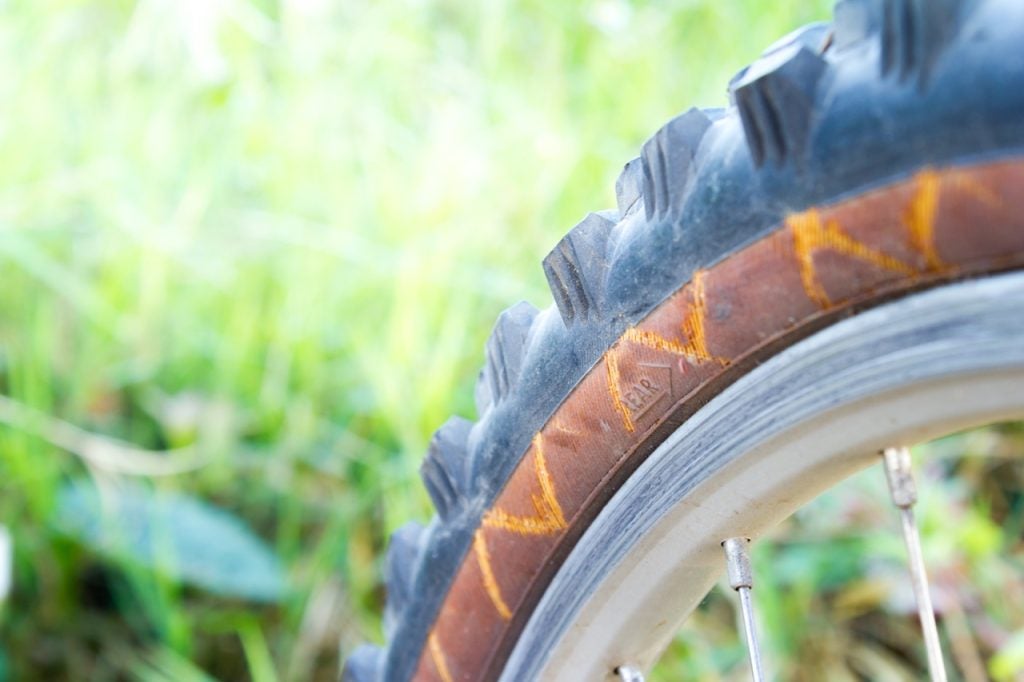
Equally important is examining the sidewall integrity of your tires. Give your tires a thorough inspection for any cuts, cracks, exposed casing threads, or bulges on the sidewalls. Damaged sidewalls can weaken the tire’s structure and potentially lead to unexpected blowouts during rides. If you spot significant sidewall damage, it’s crucial to replace the tires promptly to ensure your safety on the trails.
Punctures and cuts are common occurrences in mountain biking, but repeated incidents that cannot be adequately repaired may signal the need for new tires. Continuously plugging tire wounds can compromise the tire’s overall strength and reliability. Therefore, if your tires are frequently succumbing to irreparable punctures or cuts, it’s a strong indication that it’s time to invest in fresh rubber.
How Long Do Mountain Bike Tires Last?
Determining the average lifespan of a mountain bike tire is difficult, as there are many factors to consider, including rubber compounds (softer compounds provide better traction but wear quicker), terrain, riding style, rider weight, etc. It’s a broad range, but most riders generally get between 500 and 1000 miles out of a set of tires.
Rather than focusing on mileage, focus on how your tires are performing. Pay close attention to how your tires handle different terrains and weather conditions. If you notice a substantial decrease in traction during cornering, climbing, and braking, it’s likely that your tires have reached the end of their lifespan. A worn-out set of tires can negatively impact your overall riding experience, compromise your safety and is more prone to flatting. Therefore, it’s crucial to be mindful of any noticeable performance decline and take appropriate action.
While physical wear and tear are essential indicators, the age of your tires should also be taken into account. Even if your tires appear to be in good condition, rubber compounds can degrade over time. Hardening of the rubber can lead to decreased grip and less effective performance on the trails. If your tires have been in service for several years, it may be wise to consider replacement, regardless of their apparent condition.
These guidelines provide a general framework for determining when to replace your mountain bike tires. It’s crucial to conduct regular inspections based on your riding style and terrain. If in doubt, consult with professional bike shops or mechanics for their expert opinions.
What are the best mountain bike tires for beginners?
If you’re reading this feature, the odds are you’re just getting started on your mountain biking journey. Before ditching your old tires, you need to choose a new set that’s suitable for your riding style and terrain. There are a few key numbers you need to make note of before replacing your current tires.
When shopping for new mountain bike tires, you’ll see two numbers that you need to make note of. Mountain bike tires are sized by diameter x width. Example: 29×2.6″.
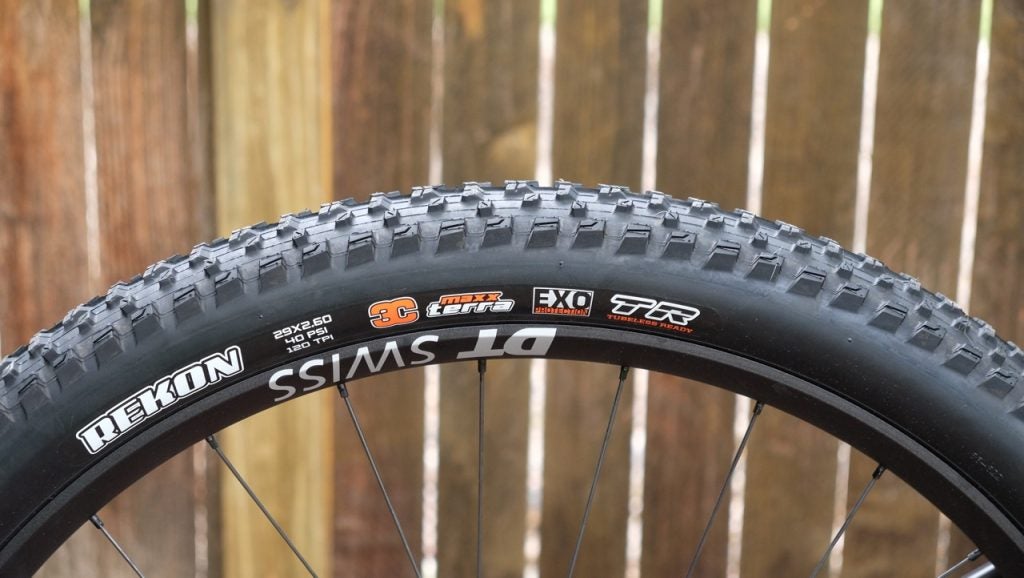
The first number is the diameter of the rim. This number is critical to match to your current tires. The second number is the width of the tire. There’s some variation here that will allow you to run a wider or narrower tire, depending on your needs. If you want to run a larger tire in your frame, consider what the max tire clearance is. If you can’t find this width published online, you can measure the distance between the seatstays and chainstays. Take this distance and subtract a half inch so that you have at least a quarter inch of clearance on either side of the tire for mud and debris. The easiest approach is to match the new tire width to your current tire size.
With these numbers in mind, here are four great mountain bike tires suitable for beginner riders that will provide confident handling and won’t hold you back as your skills progress. It’s worth noting that some mountain bikers like to run different front and rear tread patterns. To make things simple, I’ve selected four of my favorite tires that work equally well as front and rear tires. Not only does this simplify your buying decision, but since rear tires generally wear out faster than front tires, you can move the front tire to the rear and buy a new front tire so that you only need to replace one tire at a time.
We’ve ranked these tires by their “aggressiveness,” meaning how knobby they are and the type of trail (and road) conditions they are designed to handle. This list covers hybrid tires for mountain bikes used as commuter bikes, fast-rolling cross-country tires, trail tires that are great all-around performers, and more aggressive tires suitable for steep and technical terrain.
Best Mountain Bike Tire for City Use: Schwalbe Hurricane
Not everyone who owns a mountain bike plans to take it on trails. For many cyclists, mountain bikes also make practical commuter bikes. If this sounds like you, consider upgrading to Schwalbe’s Hurricane.
The Hurricane low-profile tread design minimizes rolling resistance, enabling the rider to keep a brisk pace on city streets. Whether you’re cruising along bike paths, navigating crowded urban roads, or sprinting between traffic lights, the Hurricane ensures a swift and efficient ride. It’s also very durable, which is a key factor in choosing a mountain bike tire for urban use.
Best Cross-Country Mountain Bike Tire: Maxxis Rekon
The Maxxis Rekon is a great choice for riders who want a fast-rolling tire that still provides gobs of traction when climbing steep trails and confident cornering performance.
The Rekon is the go-to tire for riders who want an efficient, fast-rolling tire that won’t have you expending extra energy on fast and flowy trails. In terms of the range of use, the Rekon is a great option for green and blue-level trail systems.
REI
Most Versatile Mountain Bike Tire: Bontrager XR4
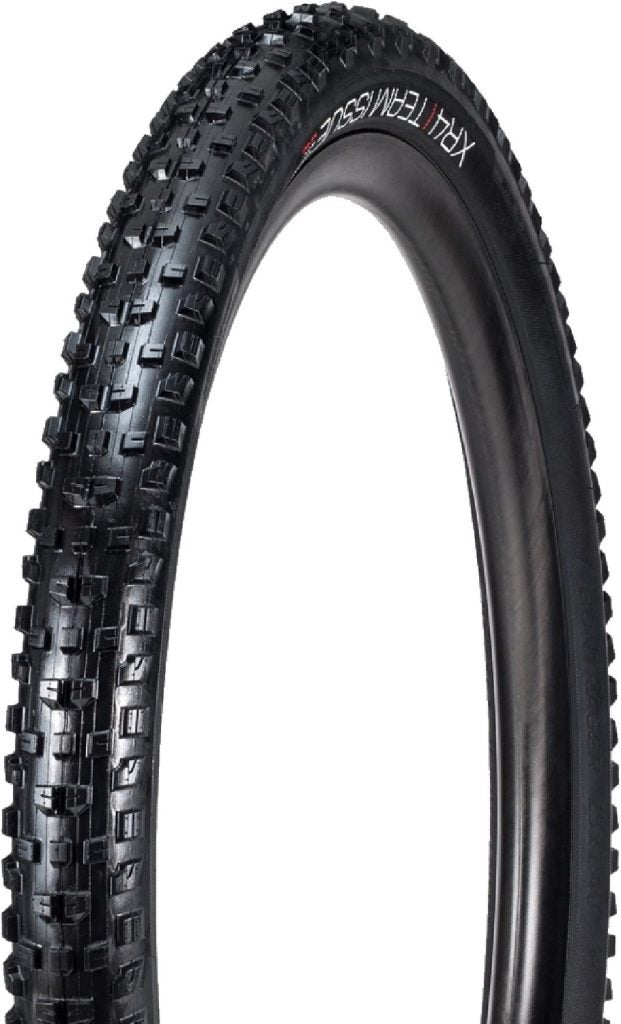 The Bontrager XR 4 mountain bike tire is my favorite Jack-of-all-trades mountain bike tire. With its exceptional performance, durability, and versatility, it stands out as an excellent choice for riders of all skill levels.
The Bontrager XR 4 mountain bike tire is my favorite Jack-of-all-trades mountain bike tire. With its exceptional performance, durability, and versatility, it stands out as an excellent choice for riders of all skill levels.
The XR4 bridges the gap between cross-country and enduro tires, which is the sweet spot for most mountain bikers. The tire’s tread pattern strikes the perfect balance between low rolling resistance and excellent grip, resulting in improved speed and efficiency and confident handling for budding mountain bikers.
REI
Best Mountain Bike Tire for Aggressive Riders: Vittoria Mazza
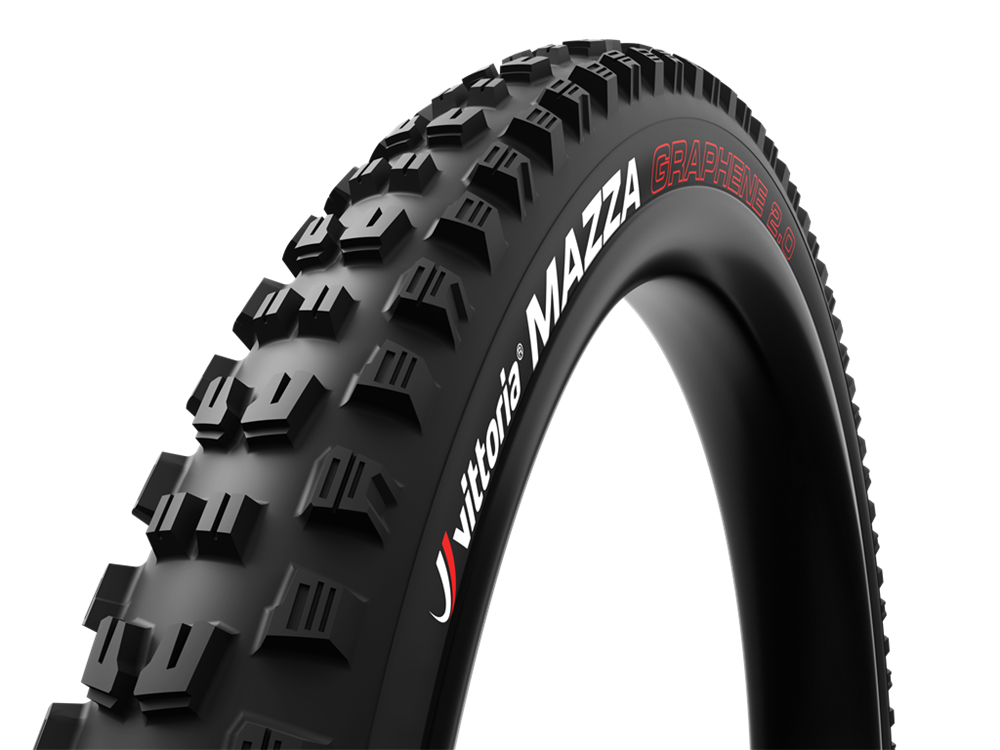 The Vittoria Mazza Enduro tire is the best option for aspring aggressive trail riders and enduro racers who are ready to tackle demanding trails. Designed specifically for enduro riding, this tire offers exceptional performance and durability that will impress even the most aggressive riders.
The Vittoria Mazza Enduro tire is the best option for aspring aggressive trail riders and enduro racers who are ready to tackle demanding trails. Designed specifically for enduro riding, this tire offers exceptional performance and durability that will impress even the most aggressive riders.
The Mazza isn’t the fastest rolling tire, but it offers outstanding grip. The aggressive tread pattern with tall, widely spaced knobs provides exceptional traction on a variety of surfaces. Whether you’re riding on loose dirt, muddy sections, or wet rocks, the Mazza maintains a strong connection with the ground, allowing you to tackle steep descents and navigate technical corners confidently.
When to replace mountain bike tires FAQ
How long do mountain bike tires last on the pavement?
Mountain bike tires used primarily on pavement have a shorter lifespan due to increased friction and wear. Factors rider weight, tire pressure, and riding style impact tire longevity. Opting for smoother tread patterns designed for urban riding can help extend tire life.
Should I replace both bike tires at the same time?
While it’s not always necessary to replace both bike tires at the same time, there are benefits to doing so. Replacing both tires simultaneously ensures consistent performance and balance between the front and rear of the bike. It helps maintain consistent traction, handling, and wear characteristics. However, if one tire is significantly more worn or damaged than the other, replacing just that tire may be sufficient. Assess the condition of each tire individually, considering factors like tread wear, punctures, and sidewall damage, to determine whether both tires need replacement or if only one will suffice.
What are the benefits of tubeless mountain bike tires?
Tubeless mountain bike tires offer several benefits for riders. Firstly, they eliminate the need for inner tubes, reducing the risk of pinch flats and punctures. This enhances reliability and allows for lower tire pressures, improving traction and comfort. Tubeless tires also reduce rolling resistance, enhancing speed and efficiency. Moreover, they provide a more supple ride and better control by conforming to the terrain. The ability to run lower pressures also enhances grip on challenging trails. Additionally, tubeless setups are typically lighter than their tubed counterparts, contributing to overall bike weight reduction. While the initial setup can be more involved and sometimes messy, the benefits of tubeless tires make them a popular choice for serious mountain bikers seeking performance and durability.
Do I have to replace a mountain bike tire after I plug it?
Whether or not you need to replace a mountain bike tire after plugging it depends on the extent and location of the damage, as well as personal preference and safety considerations. If the puncture is small and located in the tread area, a properly installed plug can provide a reliable and temporary fix. However, it’s important to regularly monitor the plugged tire for any signs of degradation or loss of performance. If the damage is significant or compromises the structural integrity of the tire, it’s advisable to replace it for safety reasons. Consulting a bike shop or tire manufacturer for guidance based on the specific damage is recommended.
What is the best all-around mountain bike tire for beginners?
In our opinion, the best all-around mountain bike tire for beginners is Bontrager’s XR4. This tire is a great option for nearly all trail conditions. It has enough grip to provide confident handling as your skills progress and rolls quickly.

